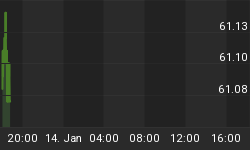Over the past two years, the federal government and the Federal Reserve have dispersed trillions of public dollars, run up enormous deficits, and kept interest rates at zero. In just about any economic textbook, this combination of policies would be described as the perfect recipe for inflation. Yet, with the exception of the usual increases in health care and education, prices by and large are not rising. Many have concluded that our economic leadership has simply outsmarted the textbooks.
The benign CPI figures are serving as a rallying point behind which the financial talking-heads are forming a parade of optimism. The low CPI is their 'proof' that inflation is not a pressing concern. This view is two dimensional.
Inflation is classically described simply as an increase in the money supply. Although these changes will impact price levels, it doesn't necessarily follow that prices will rise when inflation is high. Instead, inflation may merely result in stable prices at a time when prices would otherwise be falling.
In the popular mentality, however, inflation is simply defined as prices rising. After decades of steadily rising prices, people seem to have forgotten that prices sometimes fall. In light of the bursting of a number of record-breaking, government-fueled asset bubbles, prices should be declining across the board (as they did in the Great Depression). The fact that prices are stable, or have even rallied in some sectors, indicates that inflation is already spreading across the economy.
After falling to just 6,547 in the months after the crash, the Dow has rallied past the 10,000 mark. This should strike even novice investors as unjustified. Jobs are still being lost, a massive healthcare entitlement and carbon tax are winding through Congress, and no one with at least one foot in the real world has a palpable sense of imminent recovery. Corporate earnings have fallen far behind the rally in shares prices, stretching valuation multiples to pre-crash levels.
While not quite as frothy, home prices are now moving up for all the wrong reasons. The seminal Case-Shiller Index of home prices is now up for the fourth month in a row. The index's designer, Professor Robert Shiller, has stated recently that the current upward trajectory is unsustainable. In fact, the levels are still above the 50 and 100 year trend lines.
In the worst economic climate since the Great Depression, and after the largest housing bust on memory, single-family home prices should be falling well below the trend lines. But with a doubling of the monetary base and special interest programs like the homebuyers' tax credit, home prices have stabilized and even increased in some markets. That's the work of inflation.
With GDP growth now returning to positive territory, many inflation hawks ask why inflation has yet to truly manifest. The explanation can be found in the difference between monetary base and money supply.
The latest $1.9 trillion injection of government money was composed of some $900 billion of stimulus, of which only about 20 percent has been distributed. However, in its attempts to stabilize the financial system, the government has already spent some $1 trillion of TARP-type funds.
The TARP money, financed by an increase in the monetary base, has been provided to the banks at zero cost. And for the first time ever, the Fed is paying interest on bank reserves. Therefore, the banks can loan money to the Fed and to the government, via Treasury securities, at an interest rate spread of some 3 to 4 percent without risk. Given these incentives, it makes no sense to loan to anybody else. So, despite a massive increase in the monetary base, credit remains tight and price levels flat.
However, if the Fed stops paying interest on bank reserves or otherwise 'persuades' the banks to lend, the $1 trillion will be leveraged up by the banks and spewed out into the economy. Fractional reserve banking will transform a $1 trillion monetary base injection into a $9 trillion increase in money supply. When that happens, prices for everything will go through the roof.
So for now, inflation is like a ninja stalking our economy. It's lurking in the shadows but can't easily be seen. But once its strikes, it will be fast and deadly.
For a more in-depth analysis of our financial problems and the inherent dangers they pose for the U.S. economy and U.S. dollar, read Peter Schiff's 2008 bestseller "The Little Book of Bull Moves in Bear Markets" and his newest release "Crash Proof 2.0: How to Profit from the Economic Collapse." Click here to learn more.
More importantly, don't let the great deals pass you by. Get an inside view of Peter's playbook with his new Special Report, "Peter Schiff's Five Favorite Investment Choices for the Next Five Years." Click here to dowload the report for free. You can find more free services for global investors, and learn about the Euro Pacific advantage, at www.europac.net.
















